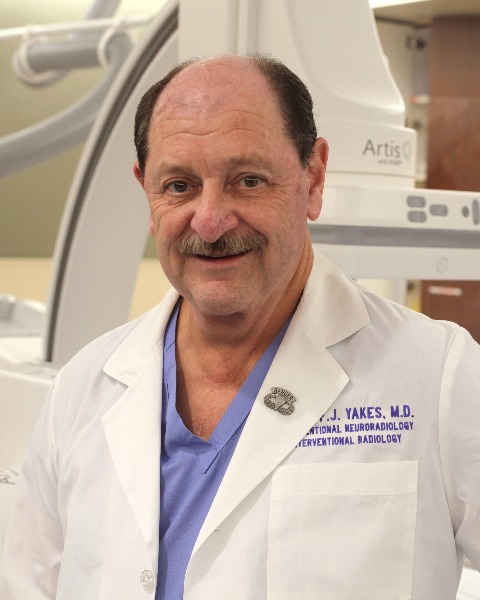Cerebrovascular
Ethanol Permanent Ablation of Head and Neck Low-Flow Venous Malformations
Ethanol Permanent Ablation of Head and Neck Low-flow Venous Malformations

Wayne Yakes, MD, FSIR, FCIRSE
Medical Director
The Yakes Vascular Malformation Center
Englewood, CO, US
Presenting Author(s)
Introduction: To determine the curative potential of treating head and neck venous malformations by direct puncture ethanol injections that is experienced in other anatomies.
Methods: 48 patients (26 females, 22 males; mean age: 34 years) presented with low-flow venous malformations of the head and neck area. 2 patients had concurrent Yakes Type I AVFs in the same anatomy. 23 patients were referred after failure of previous treatments (laser, surgery, radiation, embolization, Sirolimus, Propranolol). All patients had baseline head and neck MRs and arteriograms. The 2 patients with concurrent AVMs were endovascularly treated and their venous malformations treated by direct puncture ethanol injections.
Results: 40 patients had 90%-100% ablation of their malformations documented at follow-up by MR studies (range 6 months – 72 months; mean: 42 months). 8 patients treatment is on-going with serial lesion reductions documented by MR. 13 patients experienced skin blisters and ulcers with trans-dermal venous malformations involvement, totally healing with conservative management. No skin grafts required. Patients with malformation induced facial tissues hypertrophy then were candidates for plastic surgery reduction and reconstruction procedures.
Conclusion : Ethanol sclerotherapy of head and neck venous malformations is consistently effective and long-term ablations without recurrences in over 90% of patients documented at MR follow-up. Complications are usually focal skin blisters and ulcers, particularly with trans-dermal venous malformation skin involvement that heal with conservative management. Patients with hypertrophied tissues are candidates for plastic surgery reconstructions with the malformations being significantly ablated.
Methods: 48 patients (26 females, 22 males; mean age: 34 years) presented with low-flow venous malformations of the head and neck area. 2 patients had concurrent Yakes Type I AVFs in the same anatomy. 23 patients were referred after failure of previous treatments (laser, surgery, radiation, embolization, Sirolimus, Propranolol). All patients had baseline head and neck MRs and arteriograms. The 2 patients with concurrent AVMs were endovascularly treated and their venous malformations treated by direct puncture ethanol injections.
Results: 40 patients had 90%-100% ablation of their malformations documented at follow-up by MR studies (range 6 months – 72 months; mean: 42 months). 8 patients treatment is on-going with serial lesion reductions documented by MR. 13 patients experienced skin blisters and ulcers with trans-dermal venous malformations involvement, totally healing with conservative management. No skin grafts required. Patients with malformation induced facial tissues hypertrophy then were candidates for plastic surgery reduction and reconstruction procedures.
Conclusion : Ethanol sclerotherapy of head and neck venous malformations is consistently effective and long-term ablations without recurrences in over 90% of patients documented at MR follow-up. Complications are usually focal skin blisters and ulcers, particularly with trans-dermal venous malformation skin involvement that heal with conservative management. Patients with hypertrophied tissues are candidates for plastic surgery reconstructions with the malformations being significantly ablated.

.jpg)